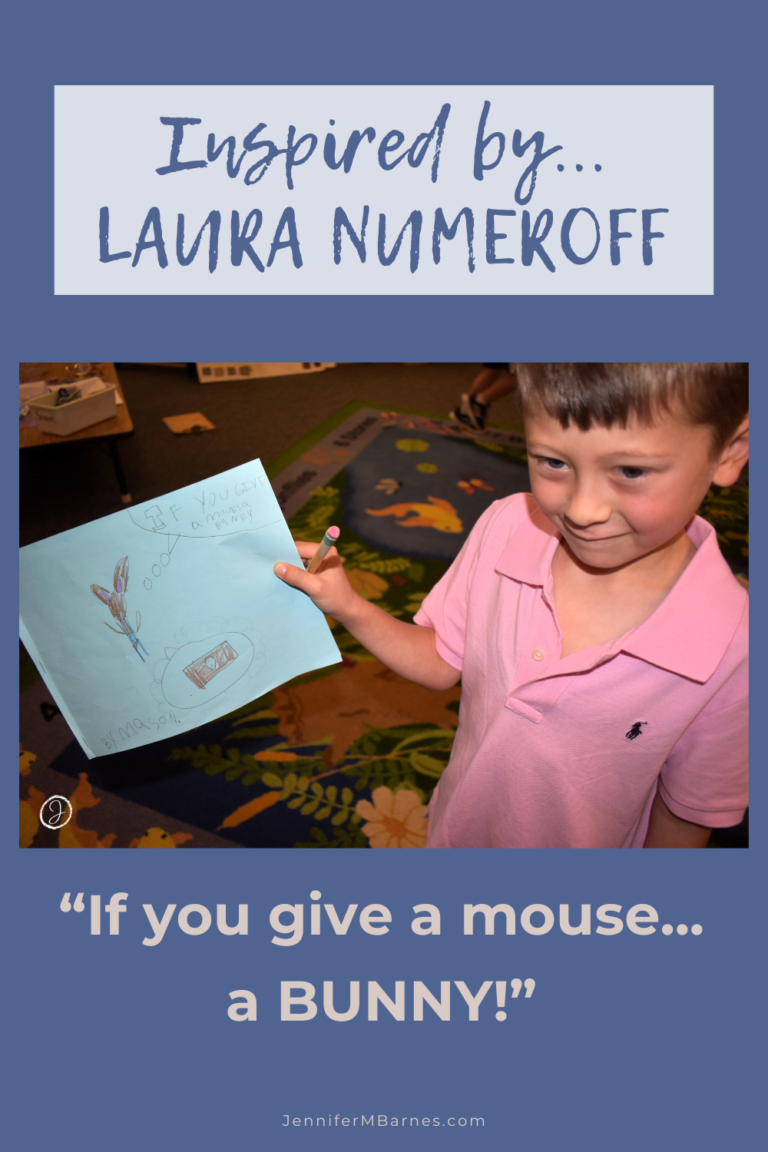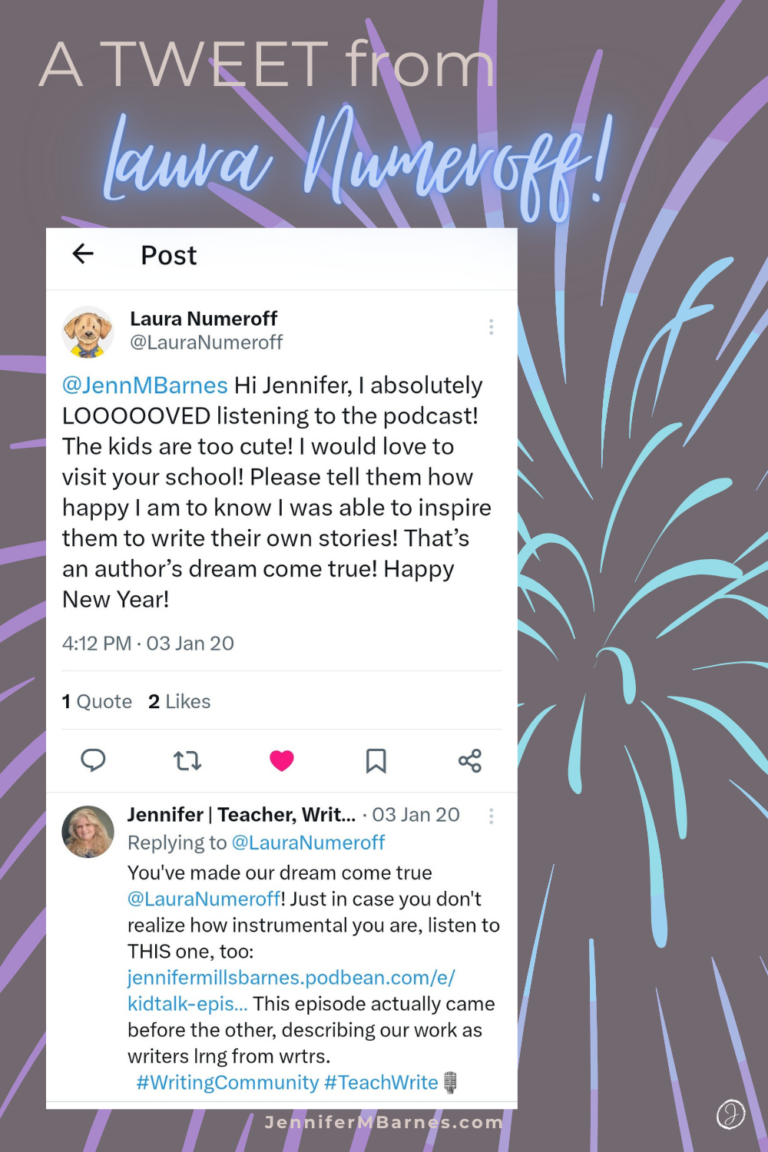From the Teacher's Desk
Author Laura Numeroff changed our first-grade world in Room #202. Every time I sat in our Author’s Chair to read If You Give a Mouse a Cookie (or any of its subsequent variations), little ones squealed.
Everything Starts With A Great Book
You know the stories. Most of them start with an “If” title. The premise of each is “If you give an animal something, then he’s going to need…” The plot of the book is a domino effect. A chain of events follows as each action flows into the next need. The story builds until the author winds down with these words. “And chances are…”
My children giggled to point out that each book ended the same way it started. “Kinda like a circle,” one said. From then on, we called Laura’s books circle stories because the ending always circled back around to the beginning.
The Author’s Ideas Give Us Ideas About Our Own Writing
How did these conversations happen? Each day we began our Writing Workshop by discussing our read-aloud from earlier in the morning. On the first day with each book, children chatted about the funny parts, their favorite pages, and the mouse bossing the boy around. By the time we read her second and third books, young authors noticed different things Laura did across them. We wrote our new knowledge on a chart entitled: “Things We Notice About Laura Numeroff’s Writing.”
“Maybe we can try some of these things in our books, too!”

More days and readings passed. After reading a whole pile of Laura’s books, all my students were inspired to write Laura Numeroff’s style themselves. So, each set out with a handmade booklet stapled together to start their drawing and writing. After all, they’d been thinking like Laura for weeks now.
As I wandered through the workshop, children pointed out their main characters, their starting points, and their funny actions. “If you give a bird ice cream, he’s gonna want some juice…”
“If you give a dog a cookie…”
“If you give a bird a house…”
Smiles and giggles emerged as children shared their ideas with each other.
Choosing Individual Author Expert Project Topics

After experiencing such inspiration from many authors, each child chose an author of their own to research independently, discover more about their lives and their books, and create a book using a similar style. My young friend, Mason, decided to select Laura as “his” author. As a part of the project, he read more books and analyzed similarities he noticed across them. Check out Mason’s analysis, written in his own words:
- The main character is a animal.
- They allwas (always) want food.
- The beginning and the end are the same. The story gos in a cercle.
- The mane karekter (main character) allwas maks a mess.

His book creation began, “If you give a monkey macaroni, he’ll ask for some cheze to go with it…”
In learning about their authors’ childhoods, families, and pets, children felt they had gained new friends. They called them by their first names. They talked about them on the playground and at lunch. And the facts they learned about them impacted their world.
When I celebrated my birthday, Mason announced that I was only ten years younger than Laura Numeroff. “Oooo,” all the children raved, thinking about the math involved in that calculation.
Twitter as an Author-Building Platform
While my students engaged with books by Laura Numeroff, Corey Rosen Schwartz, and Doreen Cronin at school, I searched their unique author accounts on Twitter at home. I was working to build my platform as a writer, teacher, and speaker. And I was becoming just as intrigued by these interesting authors’ lives as my children were.
But what difference would my Tweets make, I wondered. I thought about these authors’ interesting lives, stories, and the work they were doing while I continued watching my children work at school. I realized how deeply these authors impacted the way my six-year-olds wrote books during Writing Workshop when I saw their circle stories, their charming illustrations, and their humorous character development.
That’s when I knew the best things to share on Twitter would be the children’s own writings and their words about how these writers have changed them. How delightful would it be for an author to see a precious story, hand-lettered by a child using their very own style, their signature characters, and their whimsical setting? I received written permission from my students’ parents and decided to try connecting with a few authors who inspired us.
We had a new podcast at the time, so I asked the kids to share with me about how they grew as writers. Once the podcast was complete, I posted it on Twitter.
Making A Real Connection Between Twitter and Laura Numeroff
Just four days after I reposted and nervously tagged the authors, I was shocked to discover a response from Laura Numeroff! My children cheered that she had recognized their hard work.
They had already raved about her in the podcast – which she had heard and responded to. (Eek!) Towards the end of the podcast, just listen to how young Hugh shared his admiration of Laura:
“Laura Numeroff wrote the book over thirty years ago and she sold over four million books around the world. She got so much books around the world they put it out in other languages now!”
To think this busy author found time to write a bunch of little children back. That was the day we fell in love with Laura and that’s when I fell for Twitter.

From Then On...
Although I had learned from multiple kids over the years as they shared about Ezra Jack Keats, Maurice Sendak, Jan Brett, and Faith Ringgold, this time felt different. This time, we were seen by somebody else. For the kids, “this time” they were discovered by someone other than their parents, grandparents, and teachers. They were discovered by somebody… famous.
And from then on, our inquiries into authors and the children’s expert projects on them took on more urgency.
How You Can Start Studying Authors with Your Children
- Read tons of books. Make a list of your favorite authors.
- Pick one. Find 4-5 picture books and simply absorb them.
- Talk. Think. Observe.
- Make a chart, listing all the things you notice about your author.
- Keep talking and playing with words, imagining what you’d do with those characters.
- Research them on the Internet. Many now have kid-friendly sites, naming their favorite pets or telling the stories behind their books.
- Start writing. Taking what you know about the author’s life and the new ideas you’re gleaning from those beloved books, just write.
- Share your story with your friends, teachers, parents, grandparents, and just maybe on Twitter.
Have you found successful tips on Twitter or another platform? Please share. If you share on Twitter your children’s writings or with an author, tag me. I’d love to join along!
If you’d like to hear the podcast where my first graders talked about Laura and other authors, click here.
One version of this post was originally shared through Write2Ignite’s blog.

